Text
Imperial Radch went something like this

But also like this
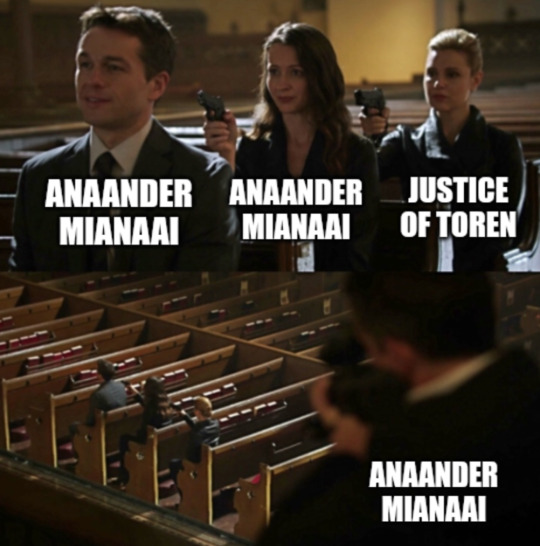
106 notes
·
View notes
Text
Which decade does Justice of Toren defrost when it needs legal counsel?
Justice of Toren One Esq.
54 notes
·
View notes
Text
rereading Ancillary Justice again and Seivarden's behavior during the confrontation with Anander Miaanai fucking gets me every time! Yeehaw! Seivarden finds out that Breq, literally her only friend or companion in the entire universe, has been lying to her the entire past year, and moreover that she was basically just using Seivarden, and has now put her in a position of danger, and specifically was using her to try and murder the ruler of the civilization that Seivarden is part of and presumably loyal to her.
Like, that's A Lot, and it would be completely reasonable and understandable if Seivarden felt deeply hurt and wounded and betrayed by that revelation. Especially when you take into account that Seivarden a) is a very selfish person and b) that Seivarden had thought everyone who knew her was dead, but actually it turns out one being is still alive, deliberately lied to her about that, and openly admitted that she never really liked her? Every time, even though I know that's not what is going to happen, I expect Seivarden to be betrayed and angry.
But instead this beautiful selfish traumatized empty-headed disaster of a person is just like Guess what, I still fucking love you, TOO BAD FOR YOU! Breq/One Esk jumps off one single bridge and Seivarden's ride or die protocol is engaged for LIFE.
Like it just makes me want to scream! She loves Breq so much! This selfish person who has never thought about anyone else once in her whole shitty life just chooses to love Breq so much that she can find out that their entire relationship is a lie and just be like, Huh! Weird! She finds out that Breq is attempting to assassinate the supreme ruler of her home civilization and she's just like Yikes, okay, well if Breq says so then I guess that's what we're doing now! Both Breq/One Esk and Anander are like, Seivarden get the fuck outta here, and Seivarden politely declines even though she's in mortal danger of her life and about three seconds away from a panic attack, because she doesn't want to leave Breq. How am I supposed to read that and not absolutely fucking lose it every single time?? She loves Breq so much, and she loves her on purpose!!! And all that in a platonic friendship!!!!!!!!! YeeHAW!
117 notes
·
View notes
Text
Seivarden was really like “ya dude I’m pretty sure ‘jumped off a bridge for me’ overrules ‘might be a rogue spaceship AI’ so I’m sticking with Breq <3” to the literal emperor of the Radch like good for her
125 notes
·
View notes
Text
I had a dream that the next big meme on Tumblr was sending me money and telling me how cool and great and special I am
7K notes
·
View notes
Photo
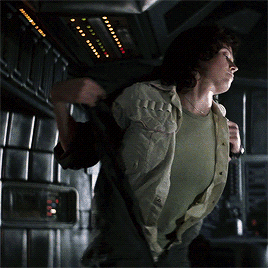


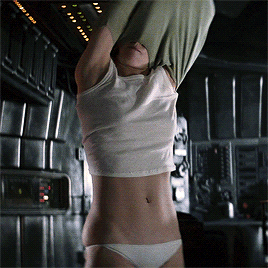
Sigourney Weaver as Ellen Ripley in ‘Alien’ (1979) dir. Ridley Scott
13K notes
·
View notes
Photo
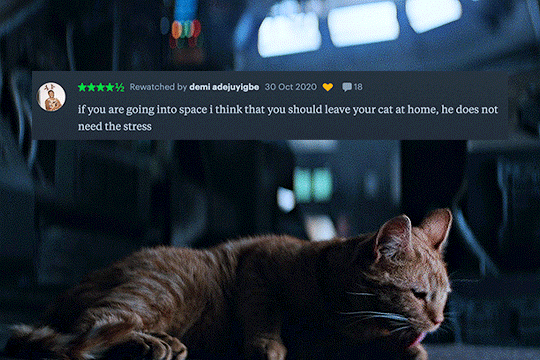
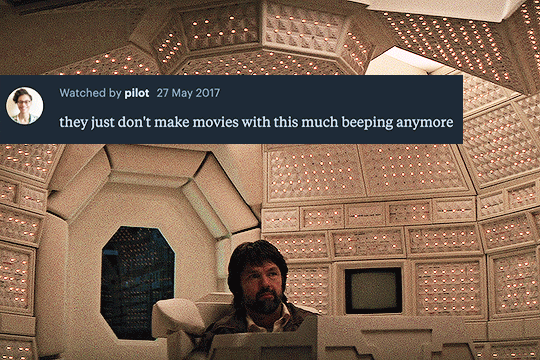

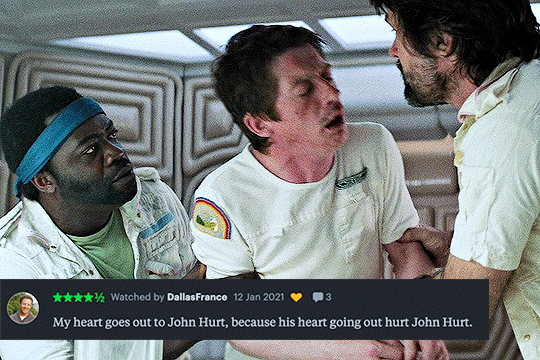
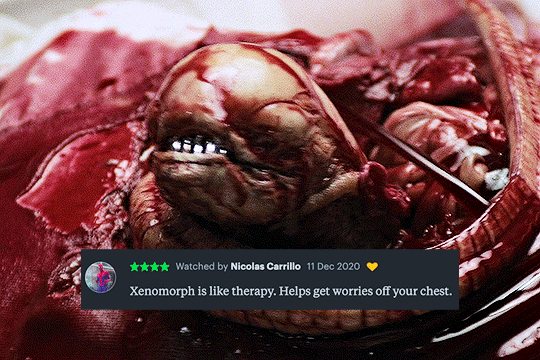
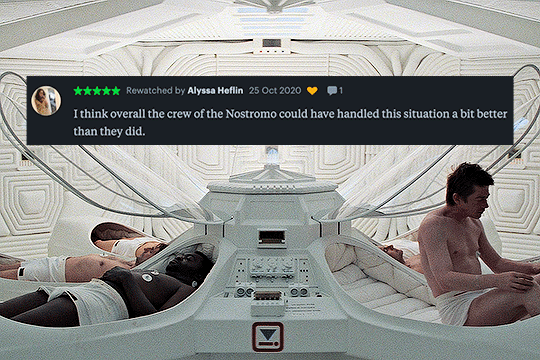
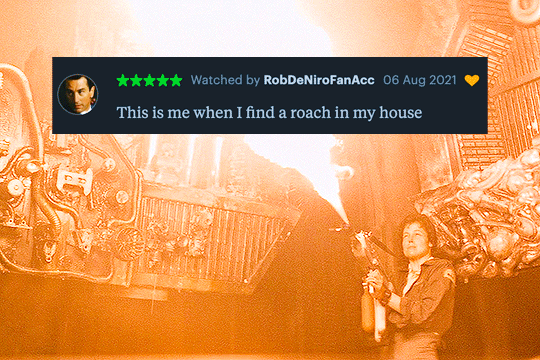

ALIEN (1979) dir. Ridley Scott
↳ letterboxd reviews (insp)
3K notes
·
View notes
Photo

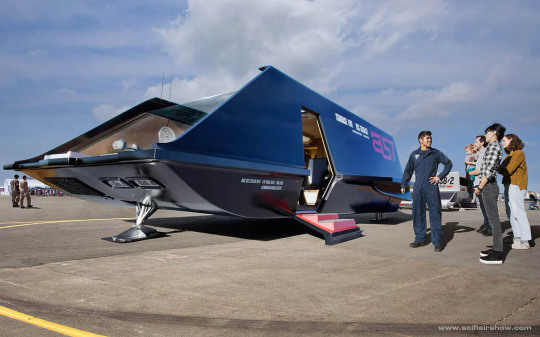
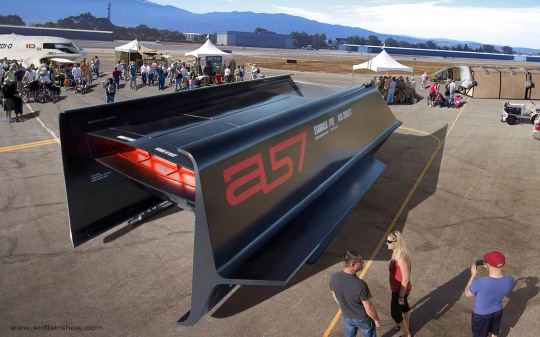

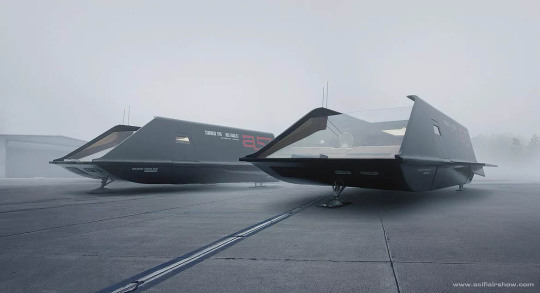
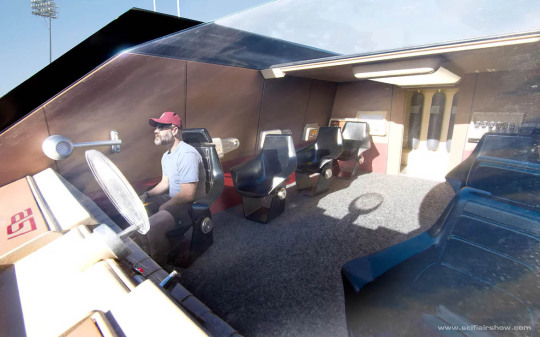


In 1966 when the producers of the original series of Star Trek needed a design for a new ship, the Shuttlecraft, they turned to the acclaimed design firm of Raymond Loewy Associates. Art director Matt Jefferies had done several designs of the craft that were deemed too expensive or difficult to build and these were turned over to the firm with the instructions to design a ship that would be easier to construct.
Thomas Kellogg was given the job of coming up with the design. Kellogg had worked on the Studebaker Avanti so, not surprisingly, the Kellogg shuttlecraft’s design does have some similarities to the classic car. Kellogg designed a glossy black shuttlecraft that was boxy but with graceful lines. It had a giant glass front end, glowing red engines and dual antennas.
The shuttlecraft that ended up in the series retains the main body of Kellogg’s design, but there where some changes that were required before construction could begin. The large glass window in the front was replaced with much more practical, and closeable, smaller windows. The color was changed to a neutral gray and two warp pods were added to the ship to better match the look of the U.S.S. Enterprise.
377 notes
·
View notes
Text
I have a friend who is very into sumo.
Trying to casually understand sumo is a little like trying to casually understand cricket. But I more or less get the basics just from watching tournaments with her.
But the one part of sumo that will always baffle me, even AFTER it was explained, is the giant macaron…
I legit thought these were photoshoped until I sat down and saw a match myself.
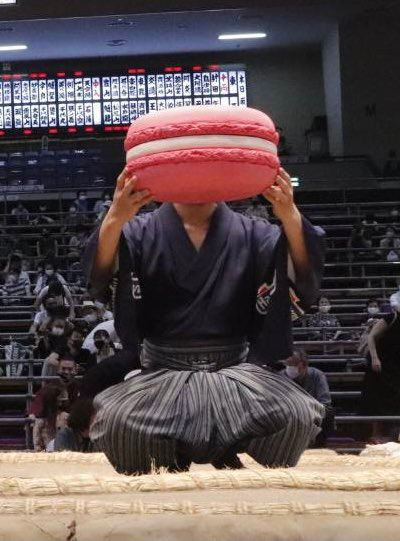

55K notes
·
View notes
Text
People, especially games, get eldritch madness wrong a lot and it’s really such a shame.
An ant doesn’t start babbling when they see a circuit board. They find it strange, to them it is a landscape of strange angles and humming monoliths. They may be scared, but that is not madness.
Madness comes when the ant, for a moment, can see as a human does.
It understands those markings are words, symbols with meaning, like a pheromone but infinitely more complex. It can travel unimaginable distances, to lands unlike anything it has seen before. It knows of mirth, embarrassment, love, concepts unimaginable before this moment, and then…
It’s an ant again.
Echoes of things it cannot comprehend swirl around its mind. It cannot make use of this knowledge, but it still remembers. How is it supposed to return to its life? The more the ant saw the harder it is for it to forget. It needs to see it again, understand again. It will do anything to show others, to show itself, nothing else in this tiny world matters.
This is madness.
172K notes
·
View notes
Text
There is no honor to be found here.
// Playing recording… //
The colony of Ors was never meant to be permanent. We were never meant to last more than a few years, and then get replaced by the actual settlers. The palladium and lead deposits detected on Aurum-3 had left the higher ups promised profits, riches found once in a lifetime. They scraped together a ragtag colony kit, just a few pressurized habs and barebones life support, not even an atmosphere processor to our name.
They outfitted it with whomever they could get on the shortest notice, and well, starting out as an exocartographer is difficult. You take what you can get. I wasn’t set off by the three days given to prepare to ship out, at least not enough to not be allured by the handsome paycheck they offered, cash upfront in return for shipping out before their survey data was released publicly and one of their enemies saw the treasure waiting. I wasn’t expecting to do much, maybe a few survey missions, mostly just sitting around until the actual colony fleet arrived. Well. That’s what I expected at least.
When the survey team first saw the outer edge of the phenomenon, they thought it was just another weird feat of geology. With the millions of worlds out there, there were plenty to go around. This one was unlike what I’d ever seen before, huge geometric spires shooting at discordant angles from the ground. The techs with their worldshell ultrasound imagers said the deposits were centered some sixty kilometers in from the slight curve that was the edge of the phenomenon, and I was in the first survey team they sent in to investigate.
We were supposed to find a good spot for mining, and I was to map the area. What we thought at the time were ravines and canyons, hard-edged and black as basalt, seemed to close in around us as we approached the center. Our geologist, Harrison, had sampled it: A Lead-graphite alloy, seemingly, almost uniform throughout the outer edges of the phenomenon. They had surmised that this may have been a meteorite at one point, crashing down, the fires of atmospheric drag melting it until it melted and filled its crater, creating a perfectly flat, almost perfectly round disk.
And that’s the other thing that spoke to me as odd - It was nearly perfectly flat. Not flat like the surface of a planet, fitting in with the curvature of the planet, but flat as a plane. It gave the eerie feeling of a slight downwards slope towards the center, sickeningly subtle.
I did my best to track our progress, using GPS and some satellite imaging to create a map of our path. Despite each corridor feeling the same as they last, there was no discernable pattern to our movement towards the center. Connection to our main settlement was out, the company had skimped on comsats and our only one went on the fritz a week before we had left on the survey mission. Typical. Normally, we would also have been connected directly to Ors Command, but the mass of black spikes lying between us and them ensured that didn’t happen.
At around forty kilometers towards the center, our driver stopped. The walls, which had now noticeably started to creep in closer, had gotten too close to safely pilot the rover through. We conversed briefly, and decided to split up. The first group, including me, Harrison, and a marine named Clint, would go on ahead, taking one of the rover’s tent habs and light pressure suits to try and make it to the center. Our pilot, engineer, and researcher would stay back to try and find another way through for the rover. We packed our bags, taking surveying equipment, radio beacons with centuries-lasting RTG batteries to mark our path and meals enough for three weeks. It would only take a day or two to reach the center, but erring on the side of caution never hurt anyone.
The next morning, as we set out, the sheer scale and immensity of the phenomena we found ourselves surrounded by set in. Spires of dull black metal, thirty meters tall now, seemed to be set to cascade down around us. I was on edge at all times, looking out for signs of the first to start to fall.
Progress that day was relatively slow, compared to the rover. We made about 10 km that day, having to rig beacons between and to the sides of spikes in order to set them upright. They wouldn’t dig into the leaden floors. I had remarked to Harrison, them being one of the people I worked the most closely with, that I was reminded of a demonstration I was shown as a schoolchild growing up on Shisurna station, a collection of ferromagnetic nanoparticles suspended in an oil, making hard spikes as a magnet moved under it. I shuddered, imagining the spikes here flowing and crashing back into the plane beneath us, with us between them.
That night, as we set camp in the now 3 meter wide corridor, Harrison called me over to show me something. While we had been walking, they had noticed a sheen over a patch of one of the spikes, and had managed to scrape off a sample. “It’s gold,” They said. “Bet my life on it.”
The next day, we began to see more and more of that sheen, then gilded patches like discolorations in birch bark. We were fascinated, and Harrison puzzled over what may have caused it. It couldn’t have been part of the original meteorite, unless it was solely in one point. Otherwise, they said, we would have found similar patches all throughout the phenomenon. They were still unsure of what may have caused the spikes themselves, but were sure there was some explanation, if their bouncing ideas off of me was any sign.
The spikes surrounding us grew as we approached, reaching now thirty meters or more into the grey sky. We were having to pick our way through them, sometimes climbing up one then sliding back down others as the paths grew too narrow to traverse. They also grew in girth, some growing to as much as ten meters at the base. We were dwarfed in comparison, and my combined awe and horror at their sheer size peaked as our contact with the rover was lost.
The patches of gold continued to grow in size and intensity along with the spires themselves, sometimes leaving streaks 5 meters long in the cold black metal. My best efforts to find some sort of pattern in the layout of the monotonous cacophony surrounding us failed, and I struggled to plot a path as we nearly altogether stopped following the channels through the leaden ground. Then, it all stopped.
The ground before us opened up, spikes suddenly stopping before a circular clearing, about 1 kilometer in diameter. Perfectly flat ground lay ahead, streaks of gold flaring out in all directions as if they were caught fleeing something. The center was almost all coated in gold, flecks and streaks of black lead abruptly breaking through. In the very center, jaggedly curved arches about 15 meters tall stood in a circle. The sheen was impossible to ignore, and despite the ashen atmosphere, rays broke through to glare off the arches. They stood menacingly, their shadows cast fifty meters to a side. We spent some time setting up camp a bit out from the arches, then took more time investigating them.
When Harrison and I reconvened, they were almost imperceptibly shaking. After discussing with them their findings, we had come to the same conclusion: There was no denying the evidence, no natural causes could have crafted this phenomenon. The arches height, perfectly dividable by pi, and their purpose: A sundial, left no room for nature. But why? If they had crafted this, surely they would have known the barren wastes surrounding it, would have recognized the futileness of placing something important here, where it would be nigh-impossible to reach.
Our discussion was halted almost immediately by the unmistakable sound of pressure release, then vomiting. During our discussion, we had neglected to pay any mind to Clint, who had been investigating all the while. He had wandered into the center of the arches, and was peering at a circular groove I had noticed while walking through. There he now sat, helmet off, hands on knees, vomiting. The vomit was tinged red, I saw, as Harrison and I rushed towards him. As we approached, I realized what I had mistaken for a groove was, in fact, incredibly small text, engraved in the golden floor. In common script, in my native language, Uraian, a thousand times over in a thousand tongues, a singular phrase.
“THERE IS NO HONOR TO BE FOUND HERE”
Harrison knelt beside Clint, now collapsed in the center of the circle, blood dripping from his lips. I noticed a pale red discoloration on his cheek, then another, then ten more. I then involuntarily stepped back in revulsion, as his abnormally pale face became coated in a hundred welts, seeming to bubble and ripple as they grew and spread. His face contorted in pain, and he coughed, spattering crimson across the smooth gold. Then he didn’t move.
Harrison turned to look at me, and I saw the same welts begin to bubble under their skin through their faceplate. They must have seen my expression, or maybe just felt the pain, as they began to scrabble at their faceplate.
My mind, despite my horror, couldn’t help but posit a question, one that may just save my life. Why them? Why hadn’t I been infected? I staggered back again in horror, then another step, then I turned and sprinted as fast as my pressure suit would allow on the slick metal ground. I felt it first on my legs. A dull burning, slowly growing in intensity as it spread up my limbs and reached my chest. I could no longer feel anything but the burning, and I collapsed behind the arch’s pillar as I began to feel it creep onto my palms and face. Immediately, the intensity died down. It’s still there. I can feel it. Creeping, slowly, corrupting and twisting of it’s own volition, taking and turning and burning… I was lucky enough to have the time to take this down. I don’t know how long I’ll last. I was lucky enough that the survey cameras have a microphone, now that my datapad seems to not be working. There’s no promise that this will make it out, but let it serve only as a warning. The riches aren’t worth the cost. This place is cursed, it’s promises are false, a lure. Hnn. I can feel it again, the burning. I can’t feel my legs anymore. Fuck.
// End recording. //
Recovered from Aurum-3 by remotely piloted drone.
The bodies of colonists recovered from the phenomenon seemed to have been symptoms of severe ultraviolet burns, as well as last-stage cancer in multiple spots on their cadaver.
Cause of death ruled as multiple organ failure.
3 notes
·
View notes
Text
where are the horror writers at
71 notes
·
View notes
Text
// Playing recording… //
The colony of Ors was never meant to be permanent. We were never meant to last more than a few years, and then get replaced by the actual settlers. The palladium and lead deposits detected on Aurum-3 had left the higher ups promised profits, riches found once in a lifetime. [[MORE]] They scraped together a ragtag colony kit, just a few pressurized habs and barebones life support, not even an atmosphere processor to our name. They outfitted it with whomever they could get on the shortest notice, and well, starting out as an exocartographer is difficult. You take what you can get. I wasn’t set off by the three days given to prepare to ship out, at least not enough to not be allured by the handsome paycheck they offered, cash upfront in return for shipping out before their survey data was released publicly and one of their enemies saw the treasure waiting. I wasn’t expecting to do much, maybe a few survey missions, mostly just sitting around until the actual colony fleet arrived. Well. That’s what I expected at least.
When the survey team first saw the outer edge of the phenomenon, they thought it was just another weird feat of geology. With the millions of worlds out there, there were plenty to go around. This one was unlike what I’d ever seen before, huge geometric spires shooting at discordant angles from the ground. The techs with their worldshell ultrasound imagers said the deposits were centered some sixty kilometers in from the slight curve that was the edge of the phenomenon, and I was in the first survey team they sent in to investigate.
We were supposed to find a good spot for mining, and I was to map the area. What we thought at the time were ravines and canyons, hard-edged and black as basalt, seemed to close in around us as we approached the center. Our geologist, Harrison, had sampled it: A Lead-graphite alloy, seemingly, almost uniform throughout the outer edges of the phenomenon. They had surmised that this may have been a meteorite at one point, crashing down, the fires of atmospheric drag melting it until it melted and filled its crater, creating a perfectly flat, almost perfectly round disk.
And that’s the other thing that spoke to me as odd - It was nearly perfectly flat. Not flat like the surface of a planet, fitting in with the curvature of the planet, but flat as a plane. It gave the eerie feeling of a slight downwards slope towards the center, sickeningly subtle.
I did my best to track our progress, using GPS and some satellite imaging to create a map of our path. Despite each corridor feeling the same as they last, there was no discernable pattern to our movement towards the center. Connection to our main settlement was out, the company had skimped on comsats and our only one went on the fritz a week before we had left on the survey mission. Typical. Normally, we would also have been connected directly to Ors Command, but the mass of black spikes lying between us and them ensured that didn’t happen.
At around forty kilometers towards the center, our driver stopped. The walls, which had now noticeably started to creep in closer, had gotten too close to safely pilot the rover through. We conversed briefly, and decided to split up. The first group, including me, Harrison, and a marine named Clint, would go on ahead, taking one of the rover’s tent habs and light pressure suits to try and make it to the center. Our pilot, engineer, and researcher would stay back to try and find another way through for the rover. We packed our bags, taking surveying equipment, radio beacons with centuries-lasting RTG batteries to mark our path and meals enough for three weeks. It would only take a day or two to reach the center, but erring on the side of caution never hurt anyone.
The next morning, as we set out, the sheer scale and immensity of the phenomena we found ourselves surrounded by set in. Spires of dull black metal, thirty meters tall now, seemed to be set to cascade down around us. I was on edge at all times, looking out for signs of the first to start to fall.
Progress that day was relatively slow, compared to the rover. We made about 10 km that day, having to rig beacons between and to the sides of spikes in order to set them upright. They wouldn’t dig into the leaden floors. I had remarked to Harrison, them being one of the people I worked the most closely with, that I was reminded of a demonstration I was shown as a schoolchild growing up on Shisurna station, a collection of ferromagnetic nanoparticles suspended in an oil, making hard spikes as a magnet moved under it. I shuddered, imagining the spikes here flowing and crashing back into the plane beneath us, with us between them.
That night, as we set camp in the now 3 meter wide corridor, Harrison called me over to show me something. While we had been walking, they had noticed a sheen over a patch of one of the spikes, and had managed to scrape off a sample. “It’s gold,” They said. “Bet my life on it.”
The next day, we began to see more and more of that sheen, then gilded patches like discolorations in birch bark. We were fascinated, and Harrison puzzled over what may have caused it. It couldn’t have been part of the original meteorite, unless it was solely in one point. Otherwise, they said, we would have found similar patches all throughout the phenomenon. They were still unsure of what may have caused the spikes themselves, but were sure there was some explanation, if their bouncing ideas off of me was any sign.
The spikes surrounding us grew as we approached, reaching now thirty meters or more into the grey sky. We were having to pick our way through them, sometimes climbing up one then sliding back down others as the paths grew too narrow to traverse. They also grew in girth, some growing to as much as ten meters at the base. We were dwarfed in comparison, and my combined awe and horror at their sheer size peaked as our contact with the rover was lost.
The patches of gold continued to grow in size and intensity along with the spires themselves, sometimes leaving streaks 5 meters long in the cold black metal. My best efforts to find some sort of pattern in the layout of the monotonous cacophony surrounding us failed, and I struggled to plot a path as we nearly altogether stopped following the channels through the leaden ground. Then, it all stopped.
The ground before us opened up, spikes suddenly stopping before a circular clearing, about 1 kilometer in diameter. Perfectly flat ground lay ahead, streaks of gold flaring out in all directions as if they were caught fleeing something. The center was almost all coated in gold, flecks and streaks of black lead abruptly breaking through. In the very center, jaggedly curved arches about 15 meters tall stood in a circle. The sheen was impossible to ignore, and despite the ashen atmosphere, rays broke through to glare off the arches. They stood menacingly, their shadows cast fifty meters to a side. We spent some time setting up camp a bit out from the arches, then took more time investigating them.
When Harrison and I reconvened, they were almost imperceptibly shaking. After discussing with them their findings, we had come to the same conclusion: There was no denying the evidence, no natural causes could have crafted this phenomenon. The arches height, perfectly dividable by pi, and their purpose: A sundial, left no room for nature. But why? If they had crafted this, surely they would have known the barren wastes surrounding it, would have recognized the futileness of placing something important here, where it would be nigh-impossible to reach.
Our discussion was halted almost immediately by the unmistakable sound of pressure release, then vomiting. During our discussion, we had neglected to pay any mind to Clint, who had been investigating all the while. He had wandered into the center of the arches, and was peering at a circular groove I had noticed while walking through. There he now sat, helmet off, hands on knees, vomiting. The vomit was tinged red, I saw, as Harrison and I rushed towards him. As we approached, I realized what I had mistaken for a groove was, in fact, incredibly small text, engraved in the golden floor. In common script, in my native language, Uraian, a thousand times over in a thousand tongues, a singular phrase.
“THERE IS NO HONOR TO BE FOUND HERE”
Harrison knelt beside Clint, now collapsed in the center of the circle, blood dripping from his lips. I noticed a pale red discoloration on his cheek, then another, then ten more. I then involuntarily stepped back in revulsion, as his abnormally pale face became coated in a hundred welts, seeming to bubble and ripple as they grew and spread. His face contorted in pain, and he coughed, spattering crimson across the smooth gold. Then he didn’t move.
Harrison turned to look at me, and I saw the same welts begin to bubble under their skin through their faceplate. They must have seen my expression, or maybe just felt the pain, as they began to scrabble at their faceplate.
My mind, despite my horror, couldn’t help but posit a question, one that may just save my life. Why them? Why hadn’t I been infected? I staggered back again in horror, then another step, then I turned and sprinted as fast as my pressure suit would allow on the slick metal ground. I felt it first on my legs. A dull burning, slowly growing in intensity as it spread up my limbs and reached my chest. I could no longer feel anything but the burning, and I collapsed behind the arch’s pillar as I began to feel it creep onto my palms and face. Immediately, the intensity died down. It’s still there. I can feel it. Creeping, slowly, corrupting and twisting of it’s own volition, taking and turning and burning… I was lucky enough to have the time to take this down. I don’t know how long I’ll last. I was lucky enough that the survey cameras have a microphone, now that my datapad seems to not be working. There’s no promise that this will make it out, but let it serve only as a warning. The riches aren’t worth the cost. This place is cursed, it’s promises are false, a lure. Hnn. I can feel it again, the burning. I can’t feel my legs anymore. Fuck.
// End recording. //
Recovered from Aurum-3 by remotely piloted drone.
The bodies of colonists recovered from the phenomenon seemed to have been symptoms of severe ultraviolet burns, as well as last-stage cancer in multiple spots on their cadaver.
Cause of death ruled as multiple organ failure.
5 notes
·
View notes
Text
I think ships’ favorites in the Imperial Radch universe should have to wear orange safety vests at all times so you don’t have to endure cold showers for a month because you accidentally told your troop carrier’s favorite human that their gloves were tacky.
129 notes
·
View notes




